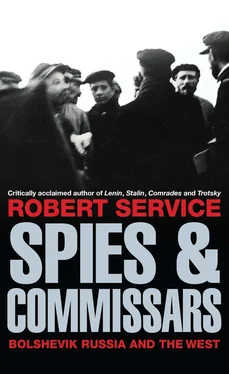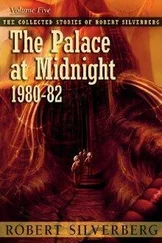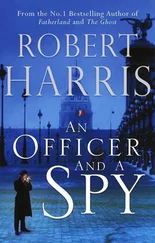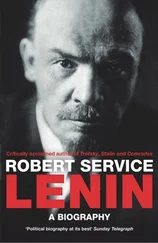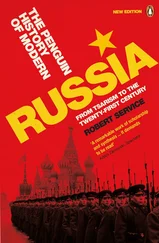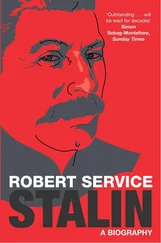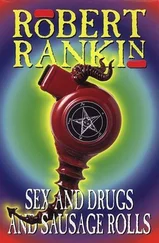By then a new factor was being considered by the Bolshevik supreme leadership. The Germans were unmistakably losing the war on the western front. With the Western Allies nearing the point of victory, it might prove unhelpful for the Soviet regime to have discriminated against French citizens. On 30 October the Bolsheviks dispatched Sadoul to interview Ludovic Naudeau, a French journalist arrested in the summer. Sadoul’s purpose became clear when he asked Naudeau for his opinion on the Allied military intervention in Russia. The journalist replied that he had supported the arrival of the Allies chiefly out of anti-German motives; but he stressed that he was now out of touch with events. Sadoul was blunt. If Naudeau wanted his freedom he would have to sign a denunciation of the intervention, allowing it to be printed in Izvestiya and Pravda and declaring his endorsement of Soviet principles. Peters of the Cheka had insisted on this as a condition. Naudeau sent Sadoul packing, but it was a sign of the uncertainties of the international situation that the Soviet leadership thought it worth while to try and do a deal with him just as they had sought to entice Lockhart to remain in Russia. 52
The Bolsheviks soon reverted to a firmer line. Although Lockhart, Reilly and Verthamont had escaped their clutches, the Cheka had assembled a mass of evidence to put before the Russian public. It also had several prisoners; and although Kalamatiano was not half as culpable as the departed British and French, he was conveniently under lock and key and could serve as the main defendant in a show-trial. The Cheka referred to the ‘Kalamatiano–Lockhart & Co. counter-revolutionary espionage organization’. 53Until then the Americans in Russia had been treated gently. As late as 15 October 1918 a young US consul was released from Butyrki prison whereas his fellow prisoner, a Frenchman captured at Tsaritsyn on the Volga, was refused his freedom. 54The implication was that Americans received softer treatment than the French — at least this was how Lockhart, safely back in Britain, interpreted the development. 55
Soon after his return, he received a letter from a distressed Moura Benckendorf, writing from Moscow: ‘I love you, Baby, past all balancing or cool reasoning. I love you more than all the world. If only you knew the longing for you. I lie awake repeating your name, visualising your surroundings, all you, my Baby.’ 56On 2 November Lockhart sent a flirtatious reply, saying she was naughty for thinking that his ship might go down in the North Sea. He also mentioned that his wife Jean had nursed him back to health after a bout of Spanish flu, adding: ‘I cannot leave her.’ He had told Jean about Moura — ‘she was very nice’ about it. 57Moura wrote back jealously about how Jean was monopolizing his medical recovery. 58But by then Lockhart had put Moura at the back of his mind, ready to be fetched out only if ever the fancy and opportunity occurred. At the time such a prospect seemed permanently out of reach. Moura was both less sanguine and less fortunate. On 19 April 1919 she wrote to ‘Locky’ that ‘some Esthonians out of revenge’ had murdered her husband. 59
The Lockhart Case opened before the Supreme Revolutionary Tribunal on 25 November 1918. Prosecutor-General Nikolai Krylenko outlined a plot against Soviet rule and a Pravda editorial announced: ‘It is well known that the Allied missions in Russia have tried by means of conspiracies directly through their agents to overthrow the hated Workers’ and Peasants’ government.’ 60The art of the showtrial had yet to be refined in Soviet Russia. The authorities fumbled their hand by changing the charges between the original arraignment and the lengthy statement by Krylenko — and Angelika Balabanova, a fair-minded Bolshevik, drew attention to this. 61At the heart of the case was the contention that there had been a violent conspiracy against Sovnarkom and that Lockhart and Reilly had led the plot. In their absence it was Kalamatiano who suffered along with his right-hand man Alexander Fride. 62Altogether there were twenty defendants in court. 63The majority were people who had worked for the Americans or the British. At the second sitting, on 28 November, the Cheka’s deputy leader Peters recited the evidence that implicated Lockhart as the instigator of the plot. He recounted the activities of Reilly and Kalamatiano as well as the amount of foreknowledge in the possession of all the Allied diplomatic personnel. 64
The defendant General Zagryazhski, a former military prosecutor and judge, did not deny his association with Kalamatiano but claimed he had acted as an ‘economic informer’ only. Krylenko pressed home his advantage and concentrated his fire on the absent Reilly. When he came to examine Reilly’s lovers — especially Maria Fride and Olga Starzhevskaya — he represented them less as arch-conspirators than as foolish, deceived women. 65
The trial ended on 3 December 1918. Kalamatiano and Lieutenant Colonel Fride were to be shot within twenty-four hours. Starzhevskaya received a three-month prison sentence. Zagryazhski, Maria Fride and others were sentenced to forced labour for five years. A captured Czech was also to stay in prison until such time as the Czech Corps ceased fighting against Soviet Russia. The absentees were not forgotten — this was, after all, officially the Lockhart Case. Lockhart, Grenard, Verthamont and Reilly were declared ‘enemies of the working people’ and sentenced to death if ever they were found on Soviet territory. 66The authorities in Washington protested that Kalamatiano had had no involvement in spying activity, but did not retaliate or even apply much pressure on his behalf. 67Kalamatiano was not executed but kept in prison. Possibly the protest had been enough to save him because the communist leadership did not want to freeze their already cool relations with the US. Perhaps, too, they hoped to use Kalamatiano in a future prisoner exchange. Whatever their intentions, the experience shattered Kalamatiano’s nerves. While Reilly occupied a suite of rooms at the Savoy Hotel and Lockhart did the rounds of London’s gentlemen’s clubs, the American faced an indeterminate period in gaol.
The Bolsheviks had broken the British plot against them, but by the time the trial started the situation in the rest of Europe had been transformed. On 11 November 1918 Germany had surrendered on the western front and the Great War was suddenly over. The Soviet authorities had expunged the threat of Allied subversion only to face the still greater potential threat of an Allied invasion. France, Britain and America were masters of the continent. It was uncertain what use they would make of their power — and the rulers of the Kremlin looked nervously westwards as the New Year approached.
16. THE GERMAN CAPITULATION
On 11 November 1918 an armistice between Germany and the Allies was signed in a railway carriage in Compiègne forest, putting an end to the fighting on the western front. This was the start of a rolling thunder of events. Berlin was in turmoil. The Chancellor Max von Baden had resigned two days earlier, precipitating the Kaiser into abdicating. The German social-democrats seized the opportunity and proclaimed a new republican government with Friedrich Ebert as President and Philipp Scheidemann as Chancellor. In Moscow, the Bolsheviks had not sat idly by. Their first thoughts had been to work out how best to help the political far left in Germany. Indeed they had been making preparations for a sudden end to the Great War since late September when Sverdlov assembled Radek, Bukharin, Kamenev and others to plan an international communist congress in Russia. They decided to ask the Party Central Committee to issue guiding ‘theses’ for this event and make funds available to contact likely sympathizers abroad — and Bukharin and Rakovski meanwhile set out to join Ioffe in the German capital. 1
Читать дальше
